HSBC 2006 Annual Report Download - page 10
Download and view the complete annual report
Please find page 10 of the 2006 HSBC annual report below. You can navigate through the pages in the report by either clicking on the pages listed below, or by using the keyword search tool below to find specific information within the annual report.-
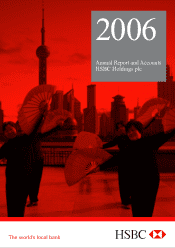 1
1 -
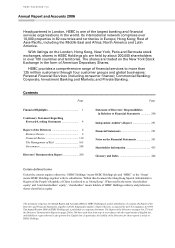 2
2 -
 3
3 -
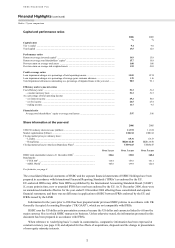 4
4 -
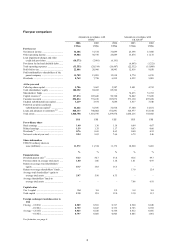 5
5 -
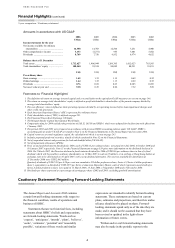 6
6 -
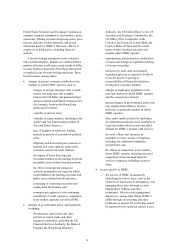 7
7 -
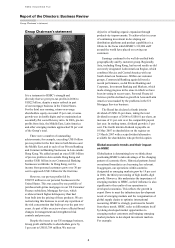 8
8 -
 9
9 -
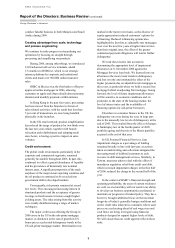 10
10 -
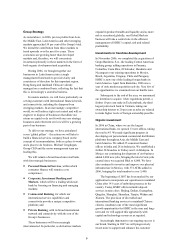 11
11 -
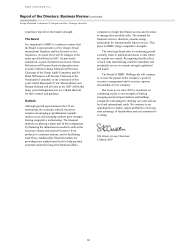 12
12 -
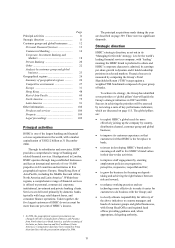 13
13 -
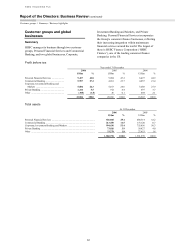 14
14 -
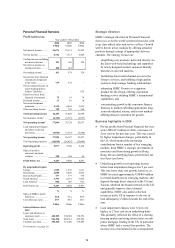 15
15 -
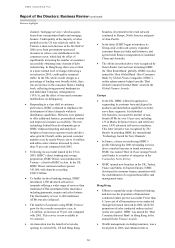 16
16 -
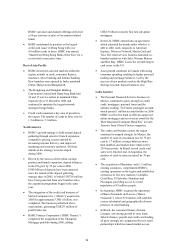 17
17 -
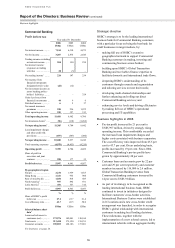 18
18 -
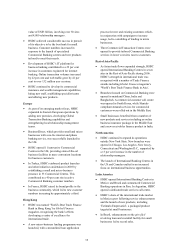 19
19 -
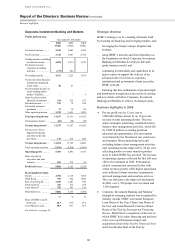 20
20 -
 21
21 -
 22
22 -
 23
23 -
 24
24 -
 25
25 -
 26
26 -
 27
27 -
 28
28 -
 29
29 -
 30
30 -
 31
31 -
 32
32 -
 33
33 -
 34
34 -
 35
35 -
 36
36 -
 37
37 -
 38
38 -
 39
39 -
 40
40 -
 41
41 -
 42
42 -
 43
43 -
 44
44 -
 45
45 -
 46
46 -
 47
47 -
 48
48 -
 49
49 -
 50
50 -
 51
51 -
 52
52 -
 53
53 -
 54
54 -
 55
55 -
 56
56 -
 57
57 -
 58
58 -
 59
59 -
 60
60 -
 61
61 -
 62
62 -
 63
63 -
 64
64 -
 65
65 -
 66
66 -
 67
67 -
 68
68 -
 69
69 -
 70
70 -
 71
71 -
 72
72 -
 73
73 -
 74
74 -
 75
75 -
 76
76 -
 77
77 -
 78
78 -
 79
79 -
 80
80 -
 81
81 -
 82
82 -
 83
83 -
 84
84 -
 85
85 -
 86
86 -
 87
87 -
 88
88 -
 89
89 -
 90
90 -
 91
91 -
 92
92 -
 93
93 -
 94
94 -
 95
95 -
 96
96 -
 97
97 -
 98
98 -
 99
99 -
 100
100 -
 101
101 -
 102
102 -
 103
103 -
 104
104 -
 105
105 -
 106
106 -
 107
107 -
 108
108 -
 109
109 -
 110
110 -
 111
111 -
 112
112 -
 113
113 -
 114
114 -
 115
115 -
 116
116 -
 117
117 -
 118
118 -
 119
119 -
 120
120 -
 121
121 -
 122
122 -
 123
123 -
 124
124 -
 125
125 -
 126
126 -
 127
127 -
 128
128 -
 129
129 -
 130
130 -
 131
131 -
 132
132 -
 133
133 -
 134
134 -
 135
135 -
 136
136 -
 137
137 -
 138
138 -
 139
139 -
 140
140 -
 141
141 -
 142
142 -
 143
143 -
 144
144 -
 145
145 -
 146
146 -
 147
147 -
 148
148 -
 149
149 -
 150
150 -
 151
151 -
 152
152 -
 153
153 -
 154
154 -
 155
155 -
 156
156 -
 157
157 -
 158
158 -
 159
159 -
 160
160 -
 161
161 -
 162
162 -
 163
163 -
 164
164 -
 165
165 -
 166
166 -
 167
167 -
 168
168 -
 169
169 -
 170
170 -
 171
171 -
 172
172 -
 173
173 -
 174
174 -
 175
175 -
 176
176 -
 177
177 -
 178
178 -
 179
179 -
 180
180 -
 181
181 -
 182
182 -
 183
183 -
 184
184 -
 185
185 -
 186
186 -
 187
187 -
 188
188 -
 189
189 -
 190
190 -
 191
191 -
 192
192 -
 193
193 -
 194
194 -
 195
195 -
 196
196 -
 197
197 -
 198
198 -
 199
199 -
 200
200 -
 201
201 -
 202
202 -
 203
203 -
 204
204 -
 205
205 -
 206
206 -
 207
207 -
 208
208 -
 209
209 -
 210
210 -
 211
211 -
 212
212 -
 213
213 -
 214
214 -
 215
215 -
 216
216 -
 217
217 -
 218
218 -
 219
219 -
 220
220 -
 221
221 -
 222
222 -
 223
223 -
 224
224 -
 225
225 -
 226
226 -
 227
227 -
 228
228 -
 229
229 -
 230
230 -
 231
231 -
 232
232 -
 233
233 -
 234
234 -
 235
235 -
 236
236 -
 237
237 -
 238
238 -
 239
239 -
 240
240 -
 241
241 -
 242
242 -
 243
243 -
 244
244 -
 245
245 -
 246
246 -
 247
247 -
 248
248 -
 249
249 -
 250
250 -
 251
251 -
 252
252 -
 253
253 -
 254
254 -
 255
255 -
 256
256 -
 257
257 -
 258
258 -
 259
259 -
 260
260 -
 261
261 -
 262
262 -
 263
263 -
 264
264 -
 265
265 -
 266
266 -
 267
267 -
 268
268 -
 269
269 -
 270
270 -
 271
271 -
 272
272 -
 273
273 -
 274
274 -
 275
275 -
 276
276 -
 277
277 -
 278
278 -
 279
279 -
 280
280 -
 281
281 -
 282
282 -
 283
283 -
 284
284 -
 285
285 -
 286
286 -
 287
287 -
 288
288 -
 289
289 -
 290
290 -
 291
291 -
 292
292 -
 293
293 -
 294
294 -
 295
295 -
 296
296 -
 297
297 -
 298
298 -
 299
299 -
 300
300 -
 301
301 -
 302
302 -
 303
303 -
 304
304 -
 305
305 -
 306
306 -
 307
307 -
 308
308 -
 309
309 -
 310
310 -
 311
311 -
 312
312 -
 313
313 -
 314
314 -
 315
315 -
 316
316 -
 317
317 -
 318
318 -
 319
319 -
 320
320 -
 321
321 -
 322
322 -
 323
323 -
 324
324 -
 325
325 -
 326
326 -
 327
327 -
 328
328 -
 329
329 -
 330
330 -
 331
331 -
 332
332 -
 333
333 -
 334
334 -
 335
335 -
 336
336 -
 337
337 -
 338
338 -
 339
339 -
 340
340 -
 341
341 -
 342
342 -
 343
343 -
 344
344 -
 345
345 -
 346
346 -
 347
347 -
 348
348 -
 349
349 -
 350
350 -
 351
351 -
 352
352 -
 353
353 -
 354
354 -
 355
355 -
 356
356 -
 357
357 -
 358
358 -
 359
359 -
 360
360 -
 361
361 -
 362
362 -
 363
363 -
 364
364 -
 365
365 -
 366
366 -
 367
367 -
 368
368 -
 369
369 -
 370
370 -
 371
371 -
 372
372 -
 373
373 -
 374
374 -
 375
375 -
 376
376 -
 377
377 -
 378
378 -
 379
379 -
 380
380 -
 381
381 -
 382
382 -
 383
383 -
 384
384 -
 385
385 -
 386
386 -
 387
387 -
 388
388 -
 389
389 -
 390
390 -
 391
391 -
 392
392 -
 393
393 -
 394
394 -
 395
395 -
 396
396 -
 397
397 -
 398
398 -
 399
399 -
 400
400 -
 401
401 -
 402
402 -
 403
403 -
 404
404 -
 405
405 -
 406
406 -
 407
407 -
 408
408 -
 409
409 -
 410
410 -
 411
411 -
 412
412 -
 413
413 -
 414
414 -
 415
415 -
 416
416 -
 417
417 -
 418
418 -
 419
419 -
 420
420 -
 421
421 -
 422
422 -
 423
423 -
 424
424 -
 425
425 -
 426
426 -
 427
427 -
 428
428 -
 429
429 -
 430
430 -
 431
431 -
 432
432 -
 433
433 -
 434
434 -
 435
435 -
 436
436 -
 437
437 -
 438
438 -
 439
439 -
 440
440 -
 441
441 -
 442
442 -
 443
443 -
 444
444 -
 445
445 -
 446
446 -
 447
447 -
 448
448 -
 449
449 -
 450
450 -
 451
451 -
 452
452 -
 453
453 -
 454
454 -
 455
455 -
 456
456 -
 457
457 -
 458
458
 |
 |

HSBC HOLDINGS PLC
Report of the Directors: Business Review (continued)
Group Chairman’s statement
8
conduct Takaful business in both Malaysia and Saudi
Arabia during 2006.
Creating advantage from scale, technology
and process engineering
We continue to make progress in streamlining our
operations by focusing on straight through
processing and simplifying our products.
During 2006, among other things, we introduced
2,300 advanced self-service terminals, added
13 countries to HSBCnet, which is our strategic
internet platform for corporate and institutional
clients and made over 900,000 online insurance
sales.
HSBC in Mexico was the first bank to offer pre-
approved online mortgages in 2006, allowing
customers to apply and obtain details about amounts,
duration and monthly payments within minutes.
In Hong Kong in the past four years, processing
has been moved from the branches in favour of
sales-related activities, with the result that less than
5 per cent of transactions are now being handled
physically in the branches.
In the UK retail network, product simplification
has reduced the range of products by two-thirds over
the last two years which, together with branch
relocation and refurbishment and adopting retail
store hours, is having a positive impact on sales
volumes.
Credit environment
The global credit environment, particularly in the
corporate and commercial segments, remained
generally favourable throughout 2006. In part, this
continued to reflect a general abundance of liquidity
and the prevalence of historically low nominal
interest rates. A significant proportion of the trade
surpluses of the major Asian exporting countries and
the oil producers continued to be recycled into
government debt in developed markets.
Consequently, risk premia remained at record
low levels. This encouraged increasing interest in
structured products and the acceptance of greater
leverage as fixed income investors sought higher
yielding assets. The risks arising from this activity
were widely distributed using a range of market
techniques.
The major credit issue affecting the Group in
2006 arose in the US in the sub-prime mortgage
market. A slowdown in the rate of growth in US
house prices accelerated delinquency trends in the
US sub-prime mortgage market. Deterioration was
marked in the more recent loans, as the absence of
equity appreciation reduced customers’ options for
refinancing. Reduced refinancing options also
highlighted the fact that, as adjustable rate mortgages
reset over the next few years at higher interest rates
than their original rates, the effect of the greater
contractual payment obligations will lead to further
delinquency.
We took these factors into account in
determining the appropriate level of impairment
allowances at 31 December 2006 against the
Mortgage Services loan book. We factored into our
allowances the most recent trends in delinquency
and loss severity and estimated the effect of the
higher payments due on adjustable rate mortgages as
they reset, in particular where we hold a second lien
mortgage behind an adjusting first mortgage. Going
forward, the level of future impairment allowances
will be sensitive to economic conditions and, in
particular, to the state of the housing market, the
level of interest rates and the availability of
financing options for sub-prime borrowers.
Elsewhere in consumer finance in the US, the
delinquency rate rose during the year, in large part
due to the unusually low levels of delinquency at the
end of 2005. This resulted from the effect of changes
in bankruptcy law in the fourth quarter of 2005,
portfolio ageing and the mix of the Metris portfolio
acquired at the end of that year.
In UK Personal Financial Services, loan
impairment charges as a percentage of lending
remained broadly in line with last year, as actions
taken on underwriting and collections mitigated the
increasing trend of indebted customers to seek
recourse in debt management services. Similarly, in
Taiwan, measures taken to deal with the effect of
mandatory regulatory relief from credit card debt,
which increased impairment charges in the first half
of 2006, reduced the charge in the second half of the
year.
In the context of HSBC’s financial strength and
operating profitability, the areas of current weakness
are well covered and they will not restrict our ability
to develop our business opportunities as planned, or
maintain our progressive dividend policy. They have,
however, brought additional focus on the uncertain
longevity of today’s generally benign conditions and
on the credit risks inherent in economies where asset
prices are accelerating ahead of real wage rises and
cash flows are being leveraged using financial
products designed to support higher levels of debt.
We will ensure that our credit appetite reflects these
risks.
